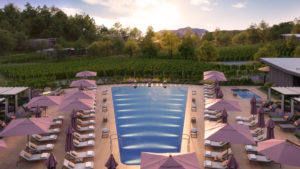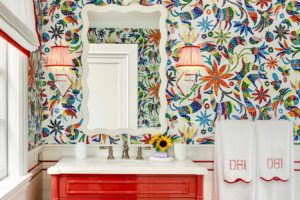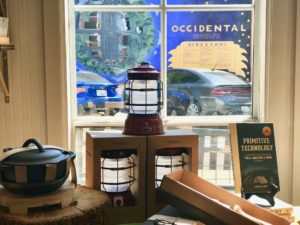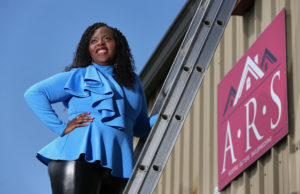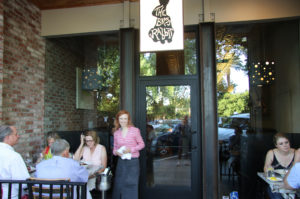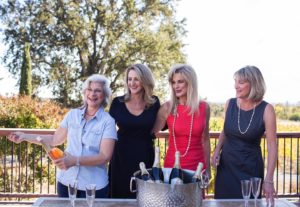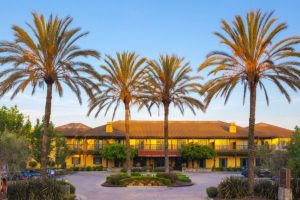A pandemic won’t impede the opening of Montage Healdsburg, a new Wine Country luxury resort. The five-star property, set to open this winter, is now accepting reservations after Dec. 19.
Tucked in the hills north of Healdsburg’s Parkland Farms neighborhood, the resort, which is still under construction, is set on 258 acres of oak woodland and vineyards. Once completed, it will feature a main lodge and 130 bungalow-style rooms and suites. Room rates are expected to start around $695 per night.
This is the first Montage property in Northern California — the luxury hotel and resort company manages five hotels in the United States (2 in California, 1 each in Utah, Hawaii, and South Carolina).
Most guest rooms at Montage Healdsburg will be approximately 650 square feet. Art work from local artists will be displayed on the walls and rooms will be stocked with snacks from local purveyors. The largest accommodation, The Guest House, will be 4,600 square feet and boast three bedrooms, a private patio, and a private hot tub.
General Manager Allen Highfield said he is “very excited” for the resort to open, and noted that it will bring “a long-awaited ultra-luxury Wine Country resort to the region.”
Highfield also mentioned the aesthetics of the property: Montage wanted to build a resort that would resonate with the surrounding landscape. The result is a design that blends with and shows off the scenic beauty of Sonoma County.
In the main lodge, guests will be able to dine at Hazel Hill, a “terroir-to-table” restaurant that overlooks a vineyard to the east. One wall of the restaurant will have windows that fold away to let the outside in. Another section of the restaurant—a private dining area—will be cantilevered out into an old oak tree.
Guests will be able to enjoy similarly spectacular views from the zero-edge pool at the 11,500-square-foot spa, which was on track to be completed before the rest of the resort. At the center of the property, there will be a wedding pavilion, in the middle of the vineyard. The idea is that brides and grooms will walk to the pavilion through the vineyards, creating an “only-in-Wine-Country” experience.
There won’t be any car traffic at the resort. Instead, guests will park vehicles near the main building and be shuttled around on golf carts.
“We see this as the kind of place you can completely disconnect—if you want to,” said Highfield.
While disconnecting from the outside world, guests at Montage Healdsburg will have ample opportunity to live the good life.
Star winemaker Jesse Katz of Aperture Estate in Healdsburg designed the hotel’s vineyard and will use grapes from the property to make estate wines only available on site (and, potentially, at other Montage properties). Katz has been consulting on the project for years, and said the opportunity to grow grapes on 14 acres in the middle of the Alexander Valley is unique.
“There aren’t a lot of projects of this size that would let me go no-holds-barred on quality and attention to detail and let me do what I want from viticulture to winemaking,” he said, noting that some blocks of vineyard are planted so densely that crews will have to pick the vines by hand, instead of with a tractor. “Montage has a great attention to detail, and it shows,” he added.
The resort also has partnered with Sonoma County Bee Company and will run an onsite apiary program for honey to serve in restaurants and wax for the spa.
At last check, Montage was running a special offer on room reservations at the Healdsburg property. Dubbed the “Spirit of Now,” guests booking this deal would enjoy a free upgrade at the time of check-in, no deposit required at booking and waived cancellation fees up to 48 hours prior to arrival. Additionally, depending on the room category booked, guests will receive up to a $200 daily resort credit for use toward dining, treatments at Spa Montage, recreational experiences throughout the property and more.


